How to Thicken Tomato Sauce Without Using Tomato Paste Introduction: Tomato sauce is a versatile ingredient that adds flavor and richness to a wide variety of dishes. While tomato paste is commonly used to thicken tomato sauce, there are alternative methods that can be employed to achieve a similar result. In this article, we will explore several techniques to thicken tomato sauce without using tomato paste while preserving the authentic taste and texture of the sauce. 1. Tomato Reduction: One of the most straightforward ways to thicken tomato sauce without using tomato paste is by reducing it slowly over low heat. This method involves simmering the sauce, allowing the excess moisture to evaporate and resulting in a thicker consistency. To begin, pour the tomato sauce into a saucepan and heat it over medium-high heat until it reaches a gentle boil. Once boiling, reduce the heat to low and let the sauce simmer uncovered. Stir occasionally to prevent the sauce from scorching or sticking to the bottom of the pan. The longer you simmer the sauce, the thicker it will become as more moisture evaporates. This process can take anywhere from 20 minutes to an hour or even longer, depending on the desired thickness. Keep in mind that reducing the sauce concentrates the flavors, so adjust the seasoning accordingly. 2. Incorporating Vegetable Purees: Another effective way to thicken tomato sauce without using tomato paste is by incorporating vegetable purees into the sauce. Vegetables such as carrots, onions, and bell peppers can help add depth and thickness to the sauce while enhancing its taste. Start by sautéing the desired vegetables, such as finely chopped onions, carrots, and bell peppers, in olive oil until they soften. Once cooked, transfer the vegetables to a blender or food processor and blitz until smooth. Alternatively, you can use a handheld immersion blender directly in the pot to puree the sautéed vegetables. Next, add the pureed vegetables to the tomato sauce and stir well to combine. Simmer the sauce for an additional 10-15 minutes to allow the flavors to meld together. This method not only enhances the thickness of the sauce but also adds a delightful complexity to its taste. 3. Tomato Roux: A roux is a classic thickening agent used in various dishes. It is traditionally made by combining equal parts flour and fat, such as butter or oil, creating a thick paste. While a tomato roux may not be as common, it can effectively thicken tomato sauce without using tomato paste. To make a tomato roux, begin by melting butter or heat olive oil in a saucepan over medium heat. Once the fat has melted, gradually add all-purpose flour, stirring continuously to create a smooth paste. Cook the roux for a couple of minutes to remove the raw taste of the flour.
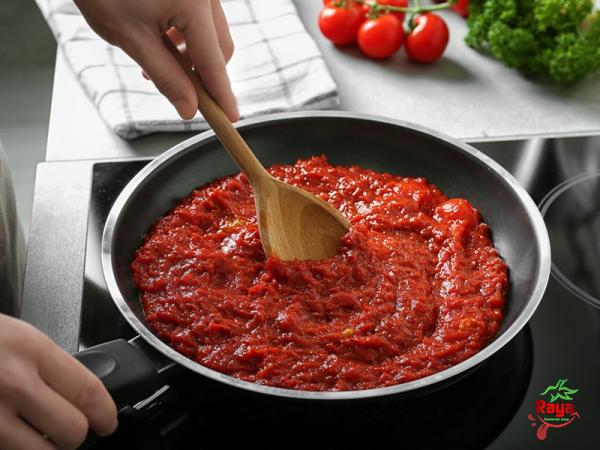
tomato paste
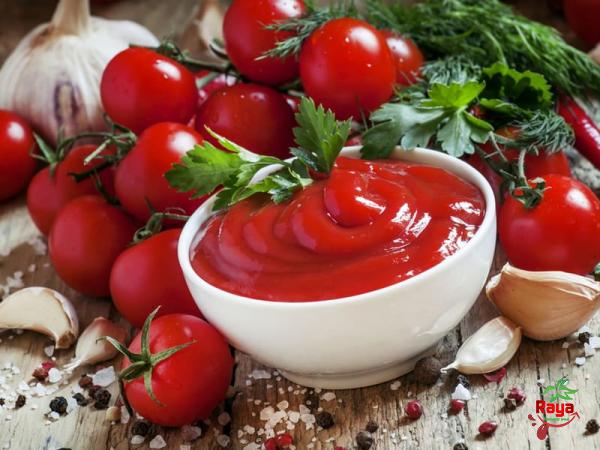 Next, slowly add the tomato sauce to the roux, whisking constantly to prevent any lumps from forming. Continue whisking until the sauce and roux are well combined. Simmer the mixture over low heat for around 10-15 minutes, allowing it to thicken to the desired consistency. The tomato roux not only adds thickness but also imparts a velvety texture to the sauce. 4. Using Starchy Ingredients: Incorporating starchy ingredients can also help thicken tomato sauce without using tomato paste. Ingredients such as cornstarch, arrowroot powder, or even cooked pasta can provide the desired thickness to the sauce. To use cornstarch or arrowroot powder, mix one tablespoon of either ingredient with an equal amount of cold water to create a slurry. Gradually add the slurry to the tomato sauce, stirring constantly. Continue to simmer the sauce for a few minutes until it thickens. Alternatively, you can add cooked pasta, such as penne or macaroni, directly to the tomato sauce. The starch released from the pasta will naturally thicken the sauce while infusing it with additional flavor. Ensure that the pasta is fully cooked before adding it to the sauce. 5. Simmering with Cheese: If you desire a creamy and thick tomato sauce, adding cheese as a thickening agent can be a delicious option. Cheese, such as Parmesan or cheddar, not only adds richness but also helps thicken the sauce while imparting a wonderful flavor. To achieve this, simply add a generous amount of grated cheese to the simmering tomato sauce. Stir continuously until the cheese melts completely and incorporates into the sauce, thickening it in the process. The resulting sauce will have a creamy and luscious texture. Conclusion: While tomato paste is a common ingredient used to thicken tomato sauce, there are numerous alternative methods available that produce equally satisfying results. Whether you choose to reduce the sauce, incorporate vegetable purees, create a tomato roux, use starchy ingredients, or simmer with cheese, each method provides a unique way to achieve a thick and flavorful tomato sauce without relying on tomato paste. Experiment with these techniques and adapt them to your taste preferences to elevate your culinary creations.Title: Thicken Tomato Sauce Without Using Tomato Paste: A Culinary Innovation for the Business Kitchen Introduction: In the previous sections, we explored various techniques to thicken tomato sauce without using tomato paste. While these methods are beneficial for home cooks, they can also be applied to commercial kitchens, offering chefs and restaurant owners a unique opportunity to create flavorful and versatile tomato sauces. In this section, we will discuss how these alternative thickening methods can be advantageous in a business setting, highlighting the benefits and practical applications for restaurants and food establishments.
Next, slowly add the tomato sauce to the roux, whisking constantly to prevent any lumps from forming. Continue whisking until the sauce and roux are well combined. Simmer the mixture over low heat for around 10-15 minutes, allowing it to thicken to the desired consistency. The tomato roux not only adds thickness but also imparts a velvety texture to the sauce. 4. Using Starchy Ingredients: Incorporating starchy ingredients can also help thicken tomato sauce without using tomato paste. Ingredients such as cornstarch, arrowroot powder, or even cooked pasta can provide the desired thickness to the sauce. To use cornstarch or arrowroot powder, mix one tablespoon of either ingredient with an equal amount of cold water to create a slurry. Gradually add the slurry to the tomato sauce, stirring constantly. Continue to simmer the sauce for a few minutes until it thickens. Alternatively, you can add cooked pasta, such as penne or macaroni, directly to the tomato sauce. The starch released from the pasta will naturally thicken the sauce while infusing it with additional flavor. Ensure that the pasta is fully cooked before adding it to the sauce. 5. Simmering with Cheese: If you desire a creamy and thick tomato sauce, adding cheese as a thickening agent can be a delicious option. Cheese, such as Parmesan or cheddar, not only adds richness but also helps thicken the sauce while imparting a wonderful flavor. To achieve this, simply add a generous amount of grated cheese to the simmering tomato sauce. Stir continuously until the cheese melts completely and incorporates into the sauce, thickening it in the process. The resulting sauce will have a creamy and luscious texture. Conclusion: While tomato paste is a common ingredient used to thicken tomato sauce, there are numerous alternative methods available that produce equally satisfying results. Whether you choose to reduce the sauce, incorporate vegetable purees, create a tomato roux, use starchy ingredients, or simmer with cheese, each method provides a unique way to achieve a thick and flavorful tomato sauce without relying on tomato paste. Experiment with these techniques and adapt them to your taste preferences to elevate your culinary creations.Title: Thicken Tomato Sauce Without Using Tomato Paste: A Culinary Innovation for the Business Kitchen Introduction: In the previous sections, we explored various techniques to thicken tomato sauce without using tomato paste. While these methods are beneficial for home cooks, they can also be applied to commercial kitchens, offering chefs and restaurant owners a unique opportunity to create flavorful and versatile tomato sauces. In this section, we will discuss how these alternative thickening methods can be advantageous in a business setting, highlighting the benefits and practical applications for restaurants and food establishments.
Specifications of tomato paste
 1. Enhancing Flavor and Quality: Thickening tomato sauce without tomato paste allows chefs to enhance the flavor and quality of their dishes. By reducing the sauce or incorporating vegetable purees, the natural undertones of the tomatoes and other ingredients become more pronounced. This intensified flavor profile can elevate the taste of various dishes, leading to a more satisfying dining experience for customers. 2. Cost-Effectiveness: For businesses on a tight budget, relying solely on tomato paste as a thickening agent can be expensive due to its higher cost compared to other ingredients. Utilizing alternative methods, such as reducing the sauce or incorporating starchy ingredients, can help reduce overall costs without compromising taste or quality. This cost-effectiveness can be especially beneficial for small restaurants and cafes looking to minimize expenses. 3. Menu Versatility: Thickening tomato sauce without tomato paste opens up a world of menu versatility for businesses in the food industry. By experimenting with different flavors, textures, and thickness levels achieved through methods like vegetable purees or simmering with cheese, chefs can create a wide range of customizable tomato-based dishes. This versatility can attract a diverse customer base and set the business apart from competitors. 4. Health Conscious Options: In today’s health-conscious society, many customers are seeking culinary options that are both delicious and nutritious. By thickening tomato sauce without tomato paste, businesses can cater to these demands by incorporating vegetables, such as carrots and bell peppers, into the sauce. This not only adds thickness but also boosts the nutritional value of the dish, providing healthier alternatives without compromising taste. 5. Dietary Restrictions: Thickening tomato sauce without tomato paste can also accommodate customers with dietary restrictions or preferences. For example, by using gluten-free starches like arrowroot powder instead of regular flour, businesses can offer gluten-free options for individuals with celiac disease or gluten sensitivities. This inclusivity can contribute to customer satisfaction and loyalty. 6. Creative Marketing Opportunities: Utilizing alternative thickening methods for tomato sauce can create marketing opportunities for businesses. Highlighting the unique techniques and flavors in menu descriptions, social media posts, or promotions can attract food enthusiasts who appreciate inventive culinary concepts. Sharing the process and benefits of using these alternatives can generate interest, potentially leading to increased foot traffic and positive brand perceptions. 7. Cross-Utilization of Ingredients: In a business kitchen, maximizing ingredient usage is crucial for optimization and cost-efficiency. By employing alternative thickening methods for tomato sauce, chefs can utilize surplus vegetables or cooked pasta that may otherwise go to waste. This cross-utilization practice can contribute to sustainability efforts and reduce food waste in the kitchen.
1. Enhancing Flavor and Quality: Thickening tomato sauce without tomato paste allows chefs to enhance the flavor and quality of their dishes. By reducing the sauce or incorporating vegetable purees, the natural undertones of the tomatoes and other ingredients become more pronounced. This intensified flavor profile can elevate the taste of various dishes, leading to a more satisfying dining experience for customers. 2. Cost-Effectiveness: For businesses on a tight budget, relying solely on tomato paste as a thickening agent can be expensive due to its higher cost compared to other ingredients. Utilizing alternative methods, such as reducing the sauce or incorporating starchy ingredients, can help reduce overall costs without compromising taste or quality. This cost-effectiveness can be especially beneficial for small restaurants and cafes looking to minimize expenses. 3. Menu Versatility: Thickening tomato sauce without tomato paste opens up a world of menu versatility for businesses in the food industry. By experimenting with different flavors, textures, and thickness levels achieved through methods like vegetable purees or simmering with cheese, chefs can create a wide range of customizable tomato-based dishes. This versatility can attract a diverse customer base and set the business apart from competitors. 4. Health Conscious Options: In today’s health-conscious society, many customers are seeking culinary options that are both delicious and nutritious. By thickening tomato sauce without tomato paste, businesses can cater to these demands by incorporating vegetables, such as carrots and bell peppers, into the sauce. This not only adds thickness but also boosts the nutritional value of the dish, providing healthier alternatives without compromising taste. 5. Dietary Restrictions: Thickening tomato sauce without tomato paste can also accommodate customers with dietary restrictions or preferences. For example, by using gluten-free starches like arrowroot powder instead of regular flour, businesses can offer gluten-free options for individuals with celiac disease or gluten sensitivities. This inclusivity can contribute to customer satisfaction and loyalty. 6. Creative Marketing Opportunities: Utilizing alternative thickening methods for tomato sauce can create marketing opportunities for businesses. Highlighting the unique techniques and flavors in menu descriptions, social media posts, or promotions can attract food enthusiasts who appreciate inventive culinary concepts. Sharing the process and benefits of using these alternatives can generate interest, potentially leading to increased foot traffic and positive brand perceptions. 7. Cross-Utilization of Ingredients: In a business kitchen, maximizing ingredient usage is crucial for optimization and cost-efficiency. By employing alternative thickening methods for tomato sauce, chefs can utilize surplus vegetables or cooked pasta that may otherwise go to waste. This cross-utilization practice can contribute to sustainability efforts and reduce food waste in the kitchen.
buy tomato paste
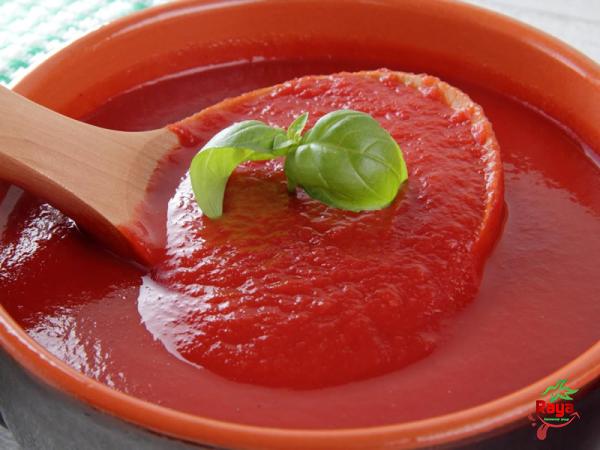 8. Consistency and Customization: In a commercial kitchen, maintaining consistency across various dishes is essential, as it ensures customers receive the same quality and taste every time they visit. By thicken tomato sauce without tomato paste, chefs can have greater control over the sauce’s consistency, allowing for customization based on different recipes or customer preferences. This consistency and customization contribute to building a reliable brand identity. 9. Support for Vegan and Plant-Based Offerings: With the rise in popularity of vegan and plant-based diets, businesses in the food industry need to cater to these growing customer segments. Thickening tomato sauce without tomato paste provides an opportunity to create delicious and satisfying plant-based options. By incorporating vegetables, vegetable purees, or starchy ingredients, businesses can meet the demand for vegan dishes and attract customers following plant-based diets. 10. Training and Skill Development: Implementing alternative thickening methods for tomato sauce in a business setting can promote skill development and creativity among kitchen staff. Encouraging chefs and cooks to experiment with different techniques fosters a learning environment, where they can expand their culinary knowledge and develop their own signature recipes. This innovation and skill development contribute to overall staff satisfaction and retention. Conclusion: Thickening tomato sauce without relying on tomato paste offers tremendous opportunities for businesses in the food industry. By enhancing flavor and quality, reducing costs, promoting menu versatility, catering to dietary restrictions, and creating marketing opportunities, chefs and restaurant owners can excel in their culinary offerings. Additionally, cross-utilization of ingredients, consistency, customization, and support for vegan options contribute to the success and sustainability of business kitchens. These alternative methods not only improve the taste and texture of tomato sauce but also expand possibilities for creativity and skill development among kitchen staff. By embracing these techniques, businesses can differentiate themselves and cater to the evolving demands of their customers, ensuring a successful and innovative culinary journey.
8. Consistency and Customization: In a commercial kitchen, maintaining consistency across various dishes is essential, as it ensures customers receive the same quality and taste every time they visit. By thicken tomato sauce without tomato paste, chefs can have greater control over the sauce’s consistency, allowing for customization based on different recipes or customer preferences. This consistency and customization contribute to building a reliable brand identity. 9. Support for Vegan and Plant-Based Offerings: With the rise in popularity of vegan and plant-based diets, businesses in the food industry need to cater to these growing customer segments. Thickening tomato sauce without tomato paste provides an opportunity to create delicious and satisfying plant-based options. By incorporating vegetables, vegetable purees, or starchy ingredients, businesses can meet the demand for vegan dishes and attract customers following plant-based diets. 10. Training and Skill Development: Implementing alternative thickening methods for tomato sauce in a business setting can promote skill development and creativity among kitchen staff. Encouraging chefs and cooks to experiment with different techniques fosters a learning environment, where they can expand their culinary knowledge and develop their own signature recipes. This innovation and skill development contribute to overall staff satisfaction and retention. Conclusion: Thickening tomato sauce without relying on tomato paste offers tremendous opportunities for businesses in the food industry. By enhancing flavor and quality, reducing costs, promoting menu versatility, catering to dietary restrictions, and creating marketing opportunities, chefs and restaurant owners can excel in their culinary offerings. Additionally, cross-utilization of ingredients, consistency, customization, and support for vegan options contribute to the success and sustainability of business kitchens. These alternative methods not only improve the taste and texture of tomato sauce but also expand possibilities for creativity and skill development among kitchen staff. By embracing these techniques, businesses can differentiate themselves and cater to the evolving demands of their customers, ensuring a successful and innovative culinary journey.

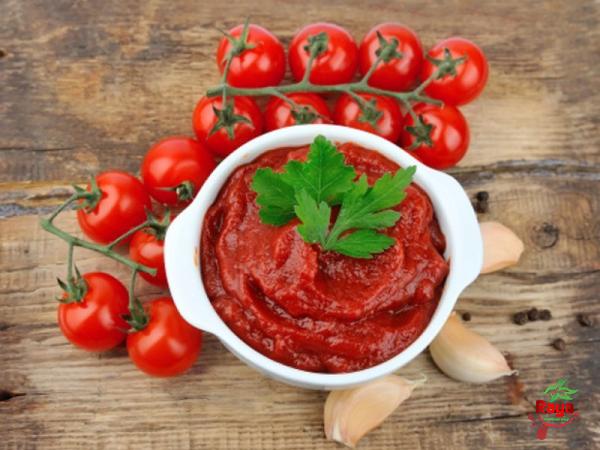



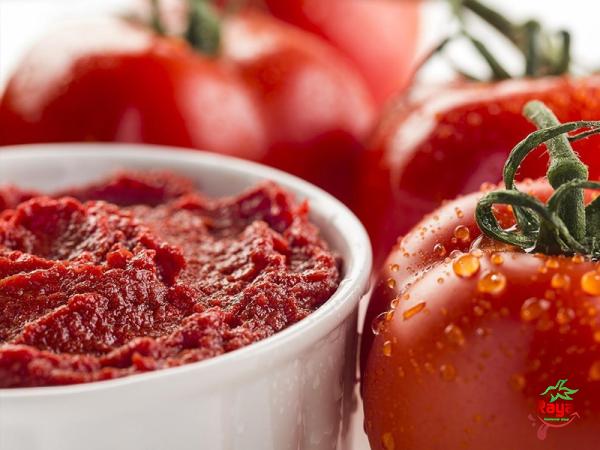


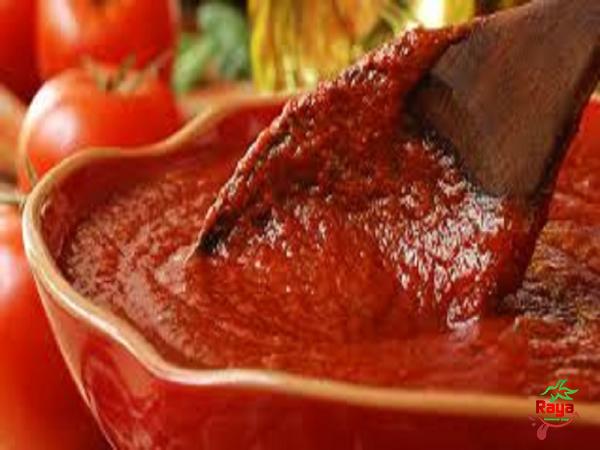
Your comment submitted.